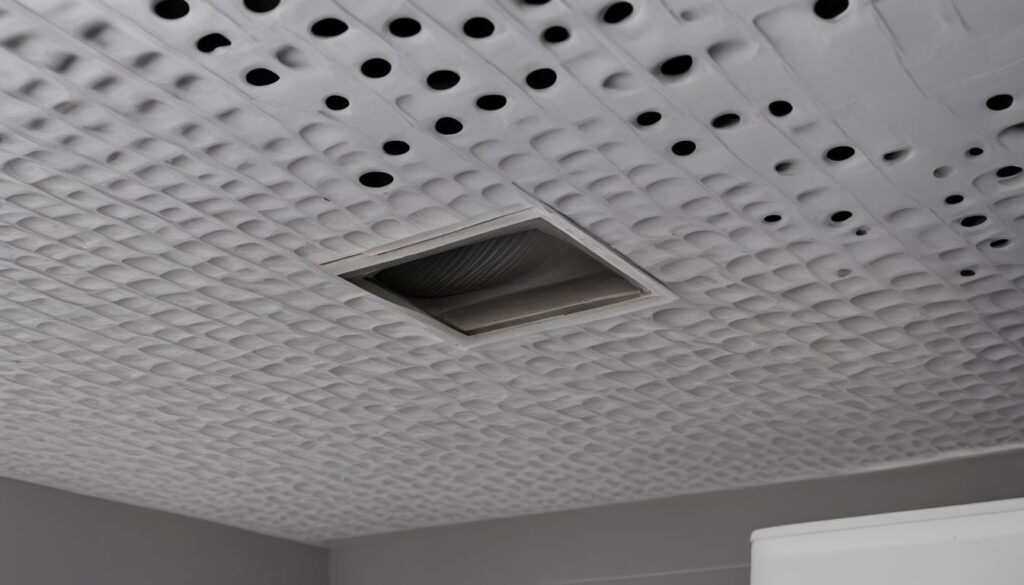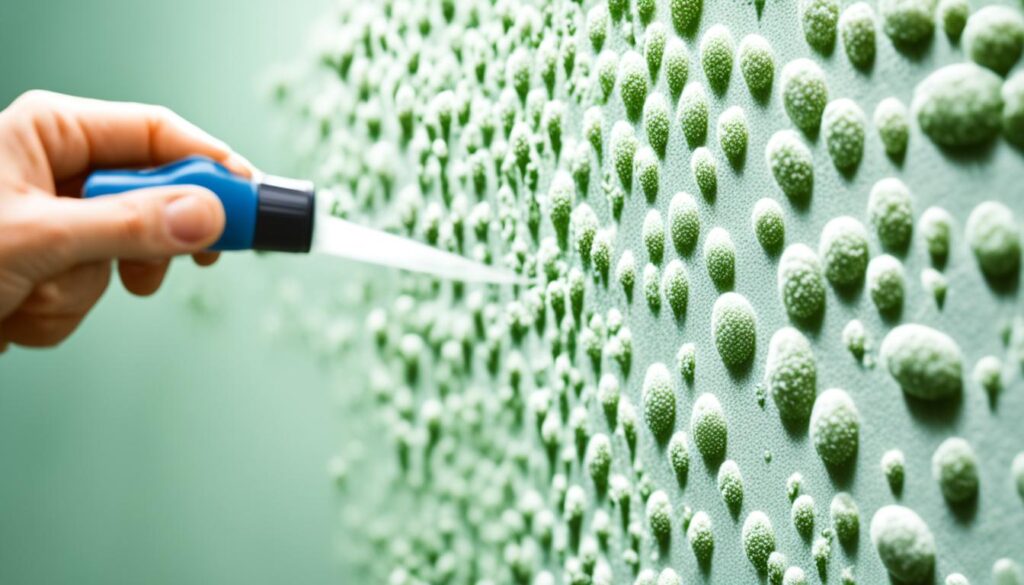
Mold Mites: Prevention & Effective Eradication
Welcome to our informative guide on mold mites, their prevention, and effective eradication methods. Mold mites, also known as mold bugs or mold mite allergens, are tiny pests that thrive in damp and humid environments. They are often found in homes and buildings, where they can pose a threat to both property and human health.
Preventing mold mite infestations is crucial to maintaining a healthy living environment. By understanding their identification, the damage they can cause, and implementing proactive measures, homeowners can effectively control and eliminate mold mites from their homes.
In this article, we will delve into the characteristics of mold mites, the signs of their presence, and the potential damage they can cause to structures. We will also explore prevention strategies, such as ventilation and humidity control, to minimize the risk of infestations. Additionally, we will discuss effective eradication methods, including both DIY approaches and professional services.
Key Takeaways:
- Identify mold mites by their appearance and signs of infestation.
- Prevent mold mite infestations by maintaining proper ventilation and controlling humidity levels.
- Regularly inspect and clean potential problem areas to minimize the risk of mold mite presence.
- Consider DIY cleaning techniques and natural remedies for mold mite eradication.
- Professional extermination services can be effective for severe infestations.
Identifying Mold Mites and the Damage They Cause
In this section, we will delve into the characteristics and appearance of mold mites, as well as the signs of their presence. We will highlight the potential damage they can cause to homes, including the growth of mold and the deterioration of structures. By understanding how to identify mold mites and their associated damage, homeowners can take the necessary steps for prevention and control.
Mold mites are tiny arthropods that belong to the same family as spiders and ticks. These microscopic pests thrive in moist environments and are commonly found in areas with high humidity levels, such as basements, bathrooms, and kitchens. They feed on mold spores and organic matter, making damp, mold-infested areas ideal habitats.
One of the key indicators of a mold mite infestation is the presence of visible mold growth. Mold mites are attracted to areas with mold, as it provides them with a readily available food source. If you notice mold colonies or a musty smell in your home, it is important to investigate further for mold mites.
Additionally, mold mites can cause damage to buildings and structures. As they feed on mold, they contribute to the growth and spread of mold colonies. This can lead to structural deterioration, compromising the integrity of walls, ceilings, and other surfaces. Mold mite infestations can also cause allergic reactions in individuals sensitive to their presence.
To effectively combat mold mites, it is crucial to address the underlying moisture and mold issues in your home. By controlling humidity levels and implementing proper ventilation, you can create an environment that is less conducive to mold mite infestations. Regularly inspecting and cleaning areas prone to dampness and mold growth can also help prevent their presence.
Preventing Mold Mite Infestations in Your Home
Prevention is key when it comes to keeping mold mites at bay in your home. By following a few simple strategies, you can significantly reduce the risk of infestation and create a healthier living environment for you and your family.
Maintain Proper Ventilation
Proper ventilation is crucial for preventing the buildup of moisture, which can provide an ideal breeding ground for mold mites. Ensure that all areas of your home, including bathrooms, kitchens, and basements, are well-ventilated. Use exhaust fans or open windows to allow fresh air to circulate and remove excess moisture.
Control Humidity Levels
Mold mites thrive in humid conditions, so it’s important to keep the humidity levels in your home in check. Aim for a relative humidity of 40-60% to discourage mold mite growth. Use dehumidifiers in areas prone to high humidity, such as basements or crawl spaces. Regularly check humidity levels with a hygrometer and take appropriate action if necessary.
Inspect and Clean Problem Areas
To prevent mold mite infestations, it’s essential to regularly inspect and clean areas that tend to accumulate moisture. Pay close attention to areas such as under sinks, around windows, and near leaking pipes. Remove any visible mold and address the source of the moisture promptly.
Seal Entry Points
Mold mites can easily enter your home through small cracks and gaps. Inspect the exterior of your home and seal any openings, especially around windows, doors, and utility penetrations. This will help prevent mold mites from finding their way inside.
Practice Good Housekeeping
Keeping your home clean and clutter-free can go a long way in preventing mold mite infestations. Regularly dust and vacuum your home, paying special attention to areas where mold mites are likely to hide, such as carpets, upholstery, and curtains. Additionally, store food in airtight containers and promptly dispose of any expired or moldy items.

Note: Regularly inspect and clean areas that tend to accumulate moisture to prevent mold mite infestations.
Summary
By implementing these preventive measures, you can greatly reduce the risk of mold mite infestations in your home. Proper ventilation, humidity control, regular inspection and cleaning, sealing entry points, and practicing good housekeeping are all effective strategies for mold mite prevention. By taking these steps, you can create a healthier living environment and protect your home from the potential damage and health risks associated with mold mite infestations.
Effective Strategies for Mold Mite Eradication and Control
To effectively eradicate and control mold mite populations, homeowners have various options ranging from DIY approaches to professional extermination services. Implementing these strategies will help prevent further damage and ensure a mold-free living environment.
Cleaning Techniques
Regular cleaning is essential for controlling mold mites. Here are some effective cleaning techniques:
- Vacuuming: Vacuum carpets, upholstery, and other areas prone to mold and dust accumulation. Use a vacuum cleaner with a HEPA filter to trap small particles.
- Dusting: Dust surfaces regularly with a damp cloth or a microfiber cloth to remove mold spores and mite debris.
- Dehumidification: Use a dehumidifier to maintain optimal humidity levels in your home, as mold mites thrive in humid conditions.
- Laundry: Wash bedding, curtains, and other washable fabrics in hot water to eliminate mold mites.
Natural Remedies
In addition to cleaning techniques, natural remedies can help control mold mites. Here are some options:
- Vinegar: Mix equal parts white vinegar and water to create a solution. Spray it on surfaces prone to mold mites, such as bathroom tiles and kitchen countertops.
- Tea Tree Oil: Dilute a few drops of tea tree oil in water and use it to wipe down mold-prone areas. Tea tree oil has antifungal properties that can inhibit mold growth.
- Diatomaceous Earth: Sprinkle food-grade diatomaceous earth in areas where mold mites are present. This natural substance will dehydrate and kill the pests.
Professional Extermination Services
In severe cases of mold mite infestation, professional extermination services may be necessary. Trained experts have the knowledge and tools to eradicate mold mites effectively. They can assess the extent of the infestation, identify the source of the problem, and provide targeted treatment.
If the mold mite infestation persists despite DIY efforts, it is advisable to seek professional help. Experienced exterminators can ensure complete eradication and provide long-term control measures to prevent future infestations.
By employing these effective eradication and control strategies, homeowners can eliminate mold mite populations and create a healthier living environment.

Conclusion
In conclusion, mold mites pose a significant threat to our homes and health. Preventing their infestation is key to maintaining a healthy living environment. By implementing proactive measures such as proper ventilation, controlling humidity levels, and regular inspection and cleaning, homeowners can minimize the risk of mold mite presence.
However, if mold mites do infest your home, effective eradication and control methods are essential. DIY cleaning techniques and natural remedies can be effective for smaller infestations, but for severe cases, professional extermination services should be considered. Promptly addressing mold mite infestations not only prevents further damage to your home’s structure but also safeguards your health.
By actively practicing prevention and employing effective eradication methods, homeowners can remain in control of mold mite populations and prevent the potential health risks associated with their presence. Maintaining a healthy home environment is crucial, and the relentless pursuit of mold mite prevention and eradication plays a vital role in achieving this goal.
FAQ
What are mold mites?
Mold mites are tiny insects that belong to the arthropod family. They thrive in damp and humid conditions, feeding on mold spores, fungi, and other organic matter. Their presence is often an indication of excessive moisture or mold growth in a property.
How do I identify mold mites?
Mold mites are extremely small and almost invisible to the naked eye. They are typically white or translucent, with eight legs and a compact body shape. They are commonly found in areas with high humidity or moisture, such as bathrooms, basements, or kitchens.
What damage can mold mites cause?
While mold mites themselves do not directly cause structural damage, their presence is often associated with mold growth. Mold can deteriorate surfaces, compromise air quality, and pose health risks. Additionally, mold mites can trigger allergic reactions in sensitive individuals.
How can I prevent mold mite infestations in my home?
To prevent mold mite infestations, it is essential to address moisture problems in your home. Proper ventilation, controlling humidity levels, and promptly fixing leaks or damp areas can help deter mold mites. Regularly cleaning and drying susceptible surfaces can also reduce their attraction.
What are effective strategies for mold mite eradication and control?
DIY approaches for mold mite control include thorough cleaning, improving ventilation, and reducing humidity levels. This may involve using dehumidifiers, fans, and air purifiers. Professional extermination services can provide targeted treatment for severe infestations and help prevent future reoccurrences.
What are the health risks associated with mold mites?
Mold mites themselves are not considered dangerous to humans. However, their presence often indicates a mold problem, which can cause respiratory issues, allergies, and worsen existing health conditions. It’s important to address mold mite infestations promptly to minimize potential health risks.




